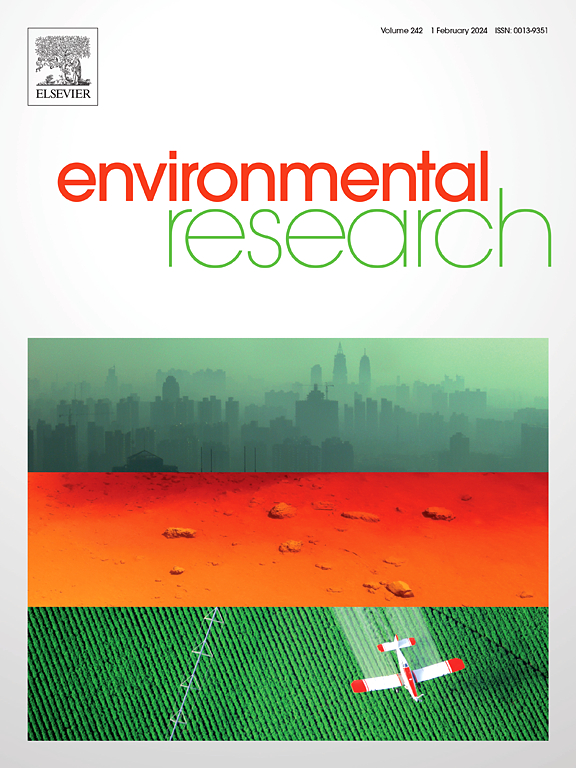季节变化和年际气候条件下海洋牧场生态系统中硅藻-鞭毛藻的动态。
IF 7.7
2区 环境科学与生态学
Q1 ENVIRONMENTAL SCIENCES
引用次数: 0
摘要
厄尔Niño-Southern涛动(ENSO)等全球气候事件显著影响沿海生态系统的生态动力学,特别是工程生态系统。硅藻和鞭毛藻等初级生产者的健康对工程生态系统的平衡至关重要,了解它们的动态对有效的保护策略至关重要。利用2003 - 2022年海州湾长期监测数据,采用广义加性模型(GAM)分析海州湾硅藻和鞭毛藻丰度的时空变化,重点分析年际气候事件的影响。结果表明:硅藻丰度在10月达到高峰,5月显著降低,季节变化明显(P本文章由计算机程序翻译,如有差异,请以英文原文为准。
Diatom-dinoflagellate dynamics in marine ranching ecosystems under seasonal shifts and interannual climatic conditions
Global climate events like the El Niño-Southern Oscillation (ENSO) significantly influence ecological dynamics in coastal ecosystems, particularly engineered ones. The health of primary producers such as diatoms and dinoflagellates are vital for engineered ecosystem balance, and understanding their dynamics is essential for effective conservation strategies. This study utilizes long-term monitoring data from 2003 to 2022, employing generalized additive models (GAM) to analyze the spatio-temporal variations of diatom and dinoflagellate abundance in Haizhou Bay, with a focus on the impacts of interannual climate events. The results showed that diatom abundance peaked in October, with significantly lower values in May, indicating strong seasonal variation (P < 0.01). In contrast, dinoflagellate abundance was highest in October and showed less pronounced seasonal differences. Interannually, diatom abundance was highest in 2017 and 2020, while dinoflagellates peaked in 2016 and 2012. Diatoms exhibited a shifting spatial distribution, concentrating in the central and eastern areas during different seasons, while dinoflagellates showed relatively uniform distributions initially, later concentrating in central and northern regions. The spatial patterns were influenced by both seasonal changes and ENSO events. The GAM analysis revealed that diatom abundance was significantly affected by temperature and nutrient availability across different seasons. Under strong El Niño conditions, diatom abundance increased, while dinoflagellate populations remained stable, indicating a competitive advantage for diatoms during these periods. Conversely, dinoflagellate abundance showed no significant variation across interannual events. Our findings underscore the importance of resource availability in shaping phytoplankton communities. Changes in diatoms and dinoflagellate abundance are key indicators of health and stress within the marine ranching ecosystem. This research supports effective management strategies and highlights the need for adaptive practices to enhance coastal engineered ecosystem resilience amid climate change.
求助全文
通过发布文献求助,成功后即可免费获取论文全文。
去求助
来源期刊

Environmental Research
环境科学-公共卫生、环境卫生与职业卫生
CiteScore
12.60
自引率
8.40%
发文量
2480
审稿时长
4.7 months
期刊介绍:
The Environmental Research journal presents a broad range of interdisciplinary research, focused on addressing worldwide environmental concerns and featuring innovative findings. Our publication strives to explore relevant anthropogenic issues across various environmental sectors, showcasing practical applications in real-life settings.
 求助内容:
求助内容: 应助结果提醒方式:
应助结果提醒方式:


